Gallery in the skies: in conversation with visual artist Fan Yan
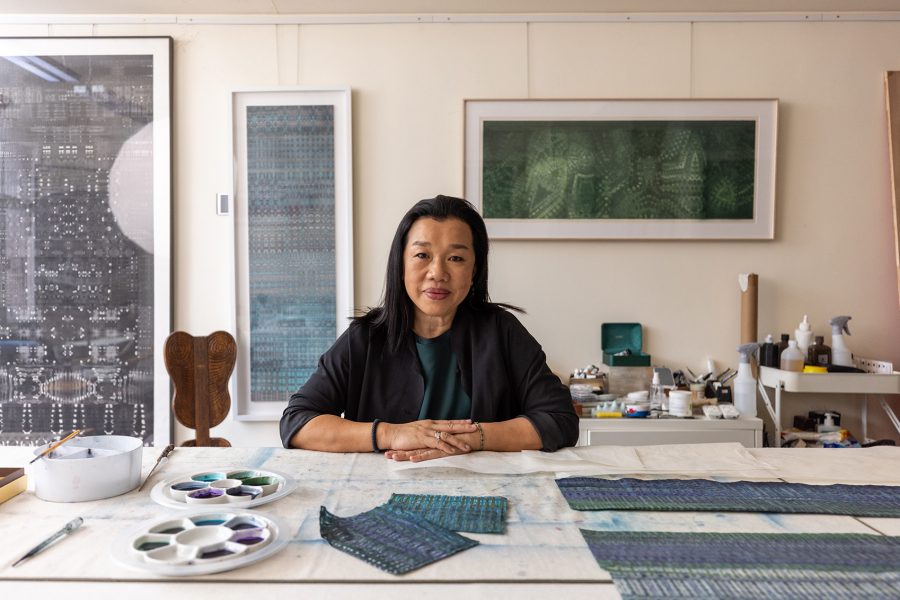
We’re sitting in Fan Yan ’s Sheung Wan studio, watching her work. With meticulous care, she takes a strip of rice paper and folds it into a fan. Folding it back over itself, again and again, she clasps the compressed paper tightly between her fingertips. Then, using a pipette, she drops different watercolours onto the paper, squeezing it to ensure the ink seeps through. Once the paper is saturated with a symphony of blues, greens and purples, she unfolds it across the table, revealing a beautiful pattern – the artist’s personal musical score.
“These abstract paintings, they are like classical music, like a sonata,” Fan Yan says. “Everybody can really enjoy them in their own way. I’d like to see how the passengers connect to these works.”
Fan Yan has created three pieces, Mist in Green, Mist in Pink and Mist in Gold, that form part of the Gallery in the skies initiative. Her paintings, along with 32 other artworks, have been reproduced for display in the Business cabins of the Cathay Pacific Boeing 777-300ER. The original versions of Mist in Green and Mist in Gold are on view at our recently reopened lounge, The Bridge.

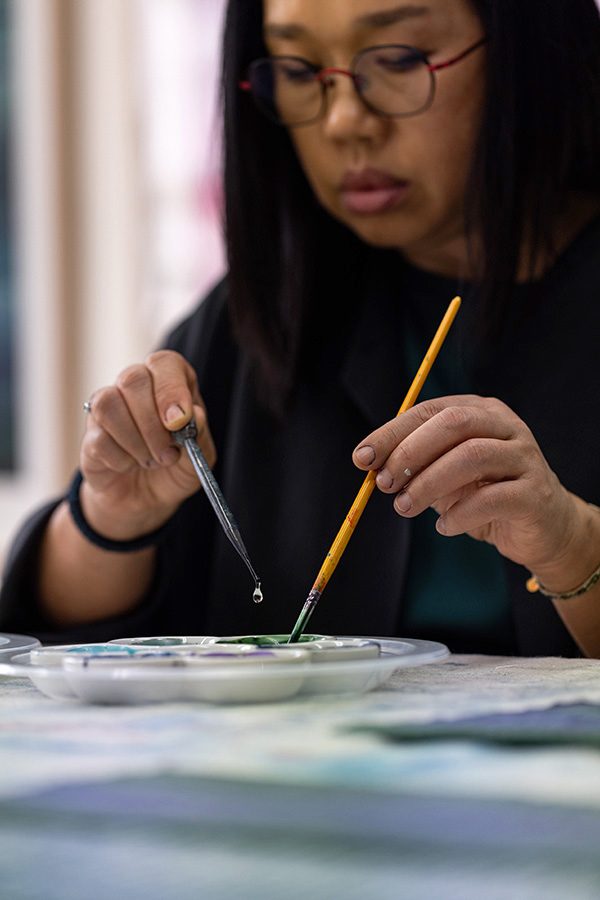
Credit: Mike Pickles
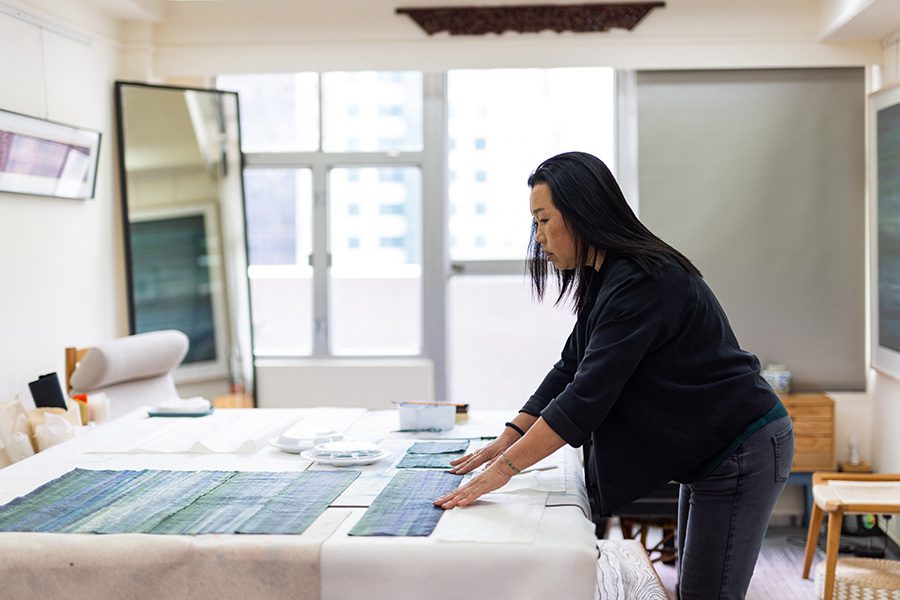
Credit: Mike Pickles
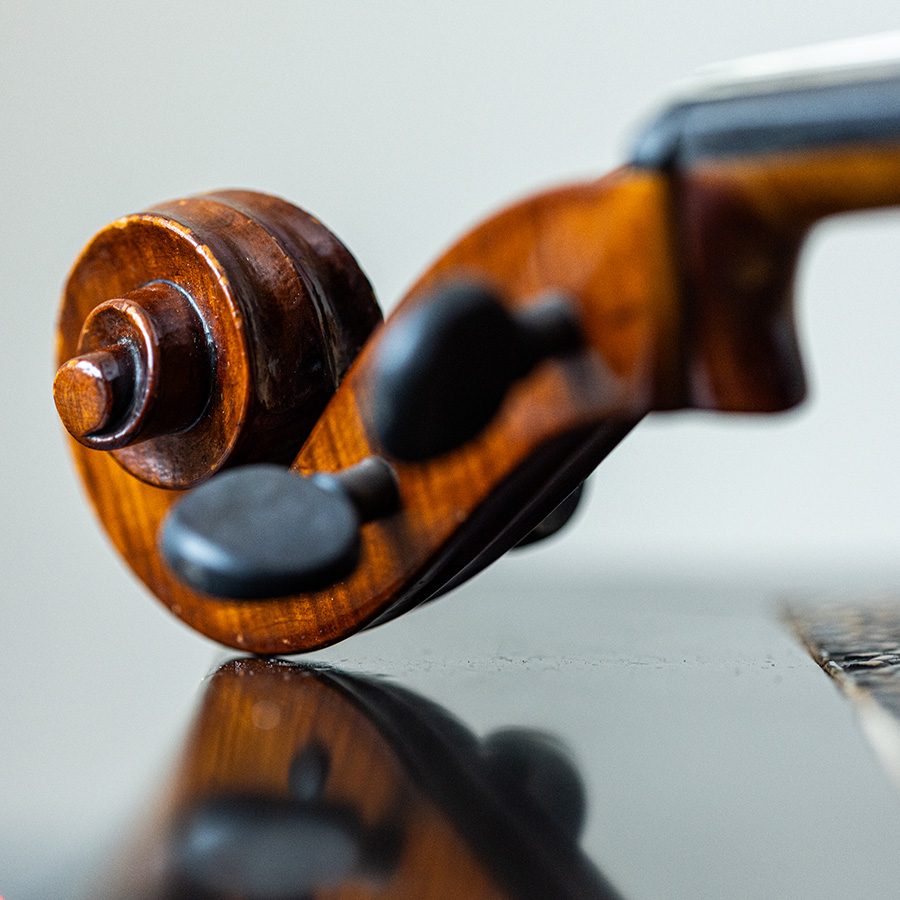
Credit: Mike Pickles
Fan Yan’s career as a visual artist came about later in life. Born into a musical family in Beijing, she was classically trained to play the violin and viola. When she was 18, she moved to Hong Kong to attend the Academy for Performing Arts and later joined the illustrious Hong Kong Philharmonic Orchestra, where she spent 20 years playing the viola. A combination of factors, including an injury from playing as well as the birth of her two children, saw Fan Yan decide to leave the orchestra to forge a new path. “I wanted to give myself a chance to pursue my first dream – which is painting,” she says.
Under the tutelage of Hong Kong artists Lam Tian Xin, Cecilia Ho, Ng Chung and Pak Yeung, Fan Yan began learning traditional Chinese ink techniques, using a brush to paint mountainous landscapes and delicate flowers. But she was determined to develop her own style. “I really wanted to connect my past as a musician to my painting,” she says. “I'm always in search of this language. How can I translate music into visual art?”
After 10 years of experimentation, she discovered a way to reconcile her musical mind with her new mode of art. Fan Yan abandoned her brush and developed her fold, dye and dry technique, the same process she’s showing us in her studio today. Each time she unravels a strip of rice paper, she reveals a piece of her inner soundscape. “These patterns, they're very much like music patterns,” she explains. “The structures, the rhythms and sound waves – to me it really links to the language of music.” Once dried, the strips are carefully arranged one after the other, the connections almost seamless. It’s a delicate composition that, once placed together, reveals her masterpiece.
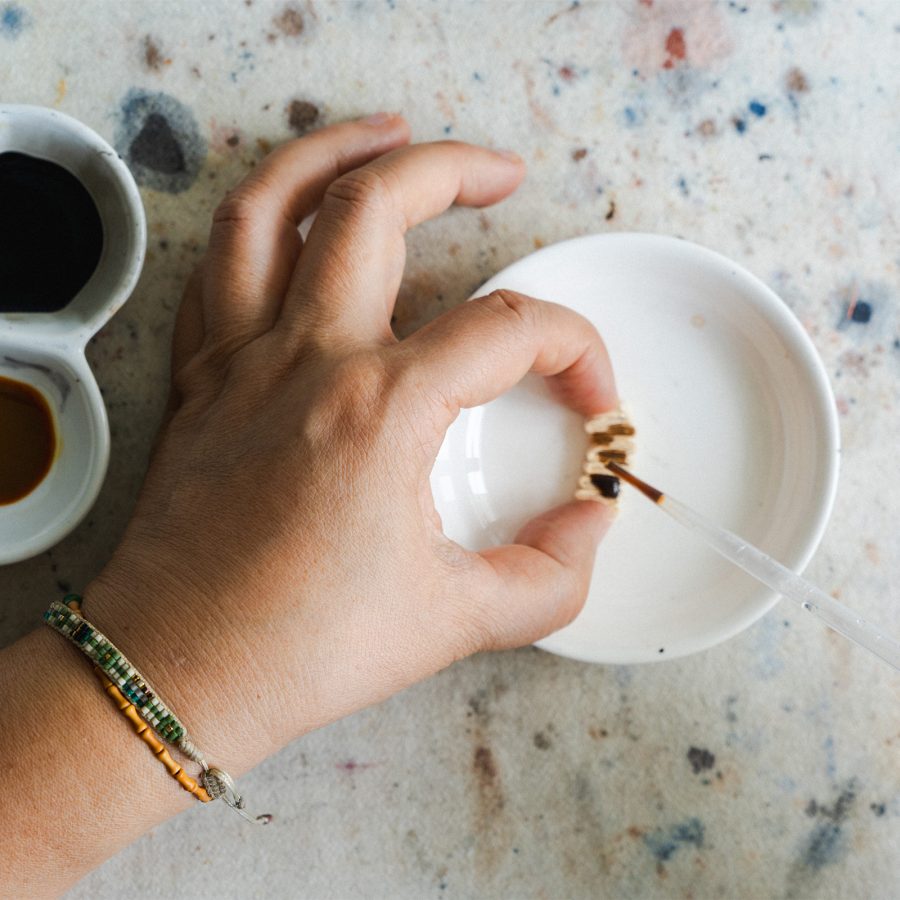
Credit: Elvis Chung
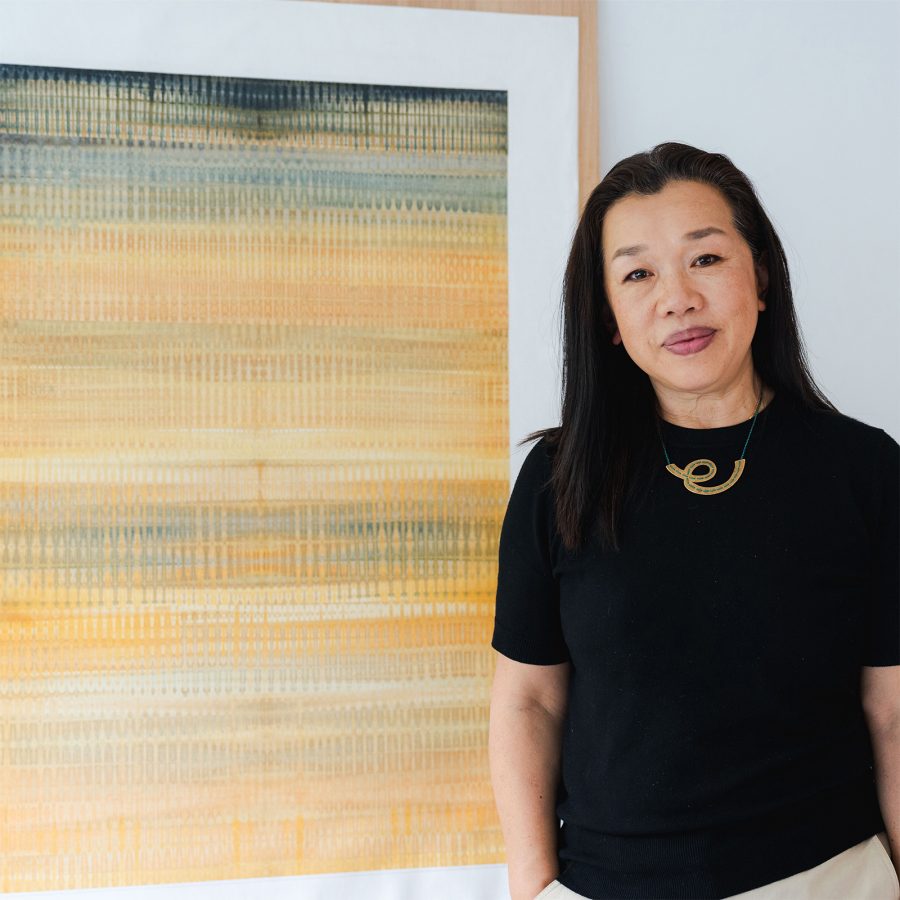
Credit: Elvis Chung
Fan Yan’s Mist series is inspired, in part, by the structure of minimalist music, a subgenre known for its measured repetition and gradual progression. It’s a style echoed in the artist’s delicate patterns: they’re repetitive and ordered, yet gently evolve as they stretch across the rice paper. “It seems like they follow the same order, but in fact each pattern has its own life. They’re all so different,” she says. Stare at them long enough and you’ll find yourself in a rhythmic trance, a feeling only heightened by the playlist the artist has curated to accompany the works.
Colour, she says, is one of the most challenging elements of her artistic practice. Fan Yan uses different depths and intensities of colour to create her patterns, and she has to be attuned to different hues in order to strike the right balance. “When you find that perfect combination with colour and water, it brightens up the image,” she says. “So it really feels like when you play an instrument, when you play the perfect intonation, you vibrate the instrument and brighten up the sound – it is exactly the same thing. It's difficult, but when you reach that perfect state, it's very satisfying.”
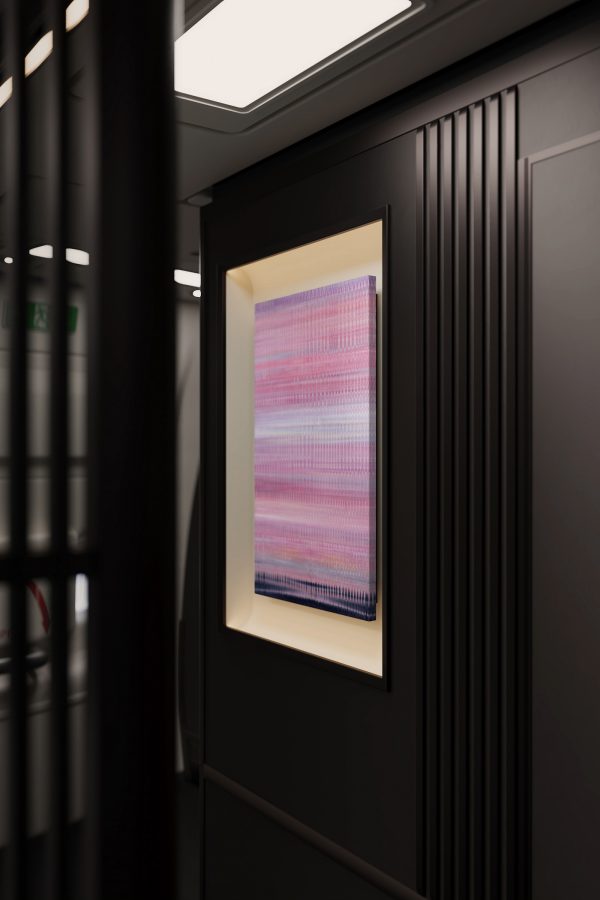
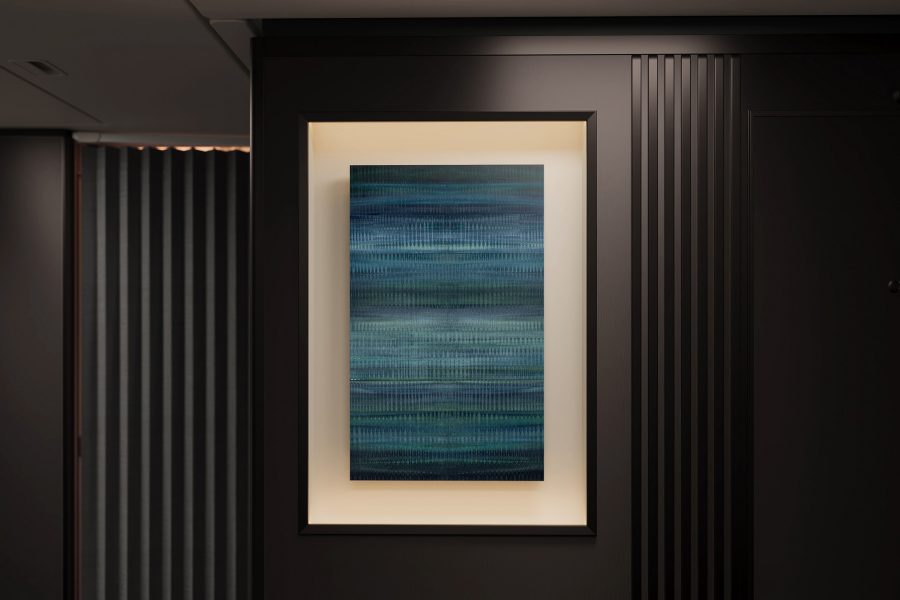
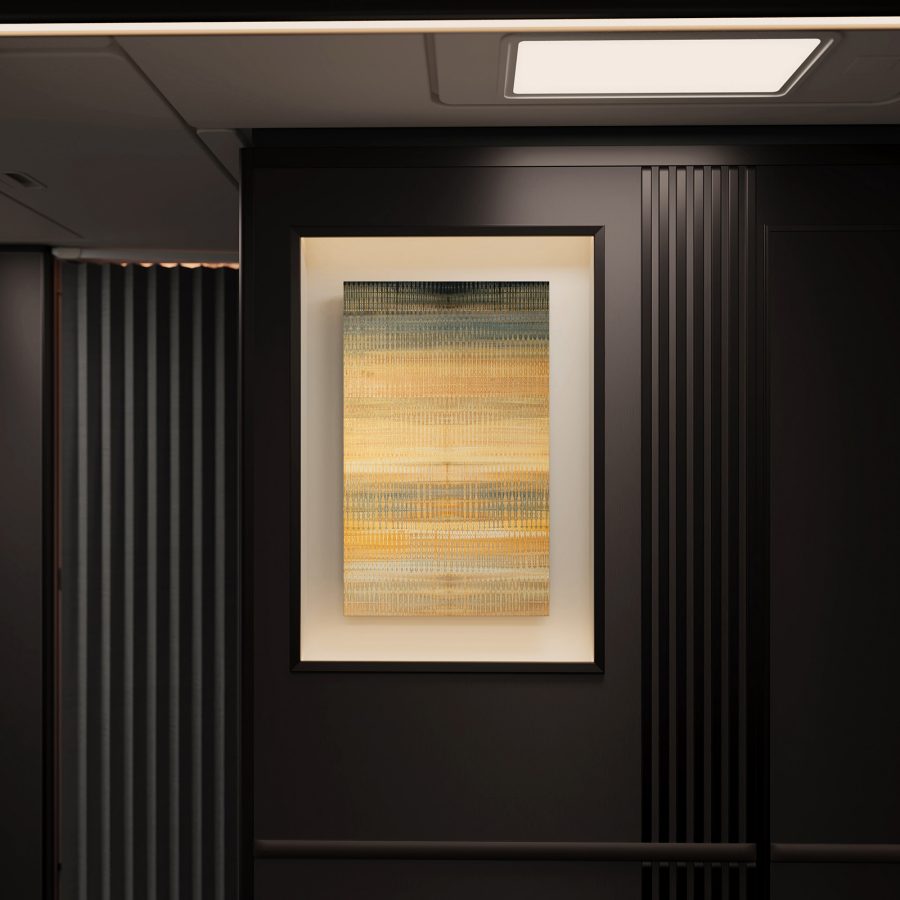
The Mist series is also inspired by the ever-changing colours of the sea, perhaps most strikingly seen in the hypnotic blues and greens of Mist in Green. These particular colours were selected for their “balance, calm and positivity”, Fan Yan says. Mist in Pink, on the other hand, was a journey in finding the perfect pink – creating a colour that holds intensity, but also carries the subtle mist-like effect that connects each piece in the series. The newest work, Mist in Gold, evokes the splendour of a sunrise with its luminous bands of colour.
As we admire the unravelled strips of dyed rice paper, Fan Yan reflects on her journey so far. “This is a very unusual path because I'm a musician who became a painter. But what I'm doing now is actually more meaningful, because I try to combine the two arts together. It would never have been the same if I didn't have the experience of music,” she says.
“You have to tell your own story. Otherwise, your art can never be unique. You, as a person, you're unique from everybody else. You have to bring that uniqueness out.
'How can I bring out music in my art?’ That's my story.”
This story was originally published in July 2024 and updated in August 2025.
More inspiration
- China – the Chinese Mainland, Hong Kong SAR, Macao SAR and Taiwan Region
- Hong Kong SAR - English
- Chinese Mainland (China) - English
- Taiwan, China - English
- 香港特別行政區 - 繁體中文
- 中国內地 - 简体中文
- 中國台灣 - 繁體中文
- Africa
- South Africa - English
- Asia
- Bangladesh - English
- Korea - English
- Singapore - English
- Cambodia - English
- 한국 - 한국어
- Sri Lanka - English
- India - English
- Malaysia - English
- Thailand - English
- Indonesia - English
- Maldives - English
- ประเทศไทย - ภาษาไทย
- Indonesia - Bahasa Indonesia
- Myanmar - English
- Vietnam - English
- Japan - English
- Nepal - English
- Việt Nam - tiếng Việt
- 日本 - 日本語
- Philippines - English
- Australasia
- Australia - English
- New Zealand - English







